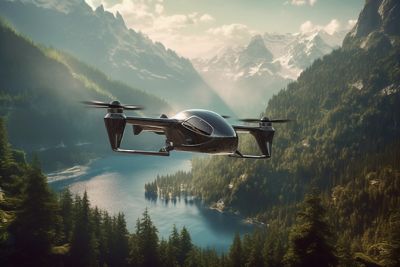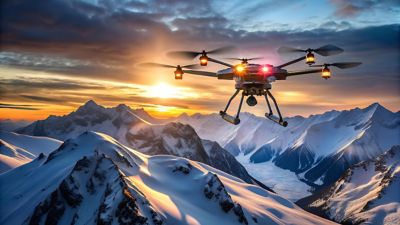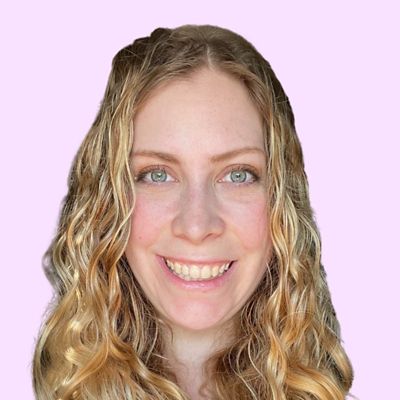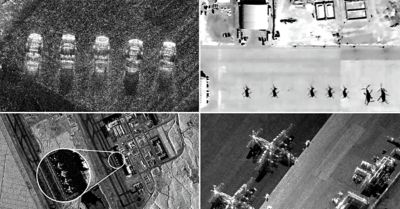-
United States -
United Kingdom -
India -
France -
Deutschland -
Italia -
日本 -
대한민국 -
中国 -
台灣
-
Ansysは、シミュレーションエンジニアリングソフトウェアを学生に無償で提供することで、未来を拓く学生たちの助けとなることを目指しています。
-
Ansysは、シミュレーションエンジニアリングソフトウェアを学生に無償で提供することで、未来を拓く学生たちの助けとなることを目指しています。
-
Ansysは、シミュレーションエンジニアリングソフトウェアを学生に無償で提供することで、未来を拓く学生たちの助けとなることを目指しています。

When envisioning the future of your company, what do you see? Perhaps it's autonomous electric vertical takeoff and landing (eVTOL) vehicles that can navigate through dangerous environments and provide reliable support to humans on the field. Or maybe your company is designing fully autonomous rovers that can be trusted to operate independently when exploring the lunar surface.
From unmanned aerial vehicles (UAVs), unmanned ground vehicles (UGVs), and unmanned underwater vehicles (UUVs) to autonomous air-to-air refueling, route clearing, passenger transportation, emergency services, and space operations — the sky isn’t the limit for autonomous technology in aerospace and defense (A&D).
Looking ahead, this versatile technology will only continue to grow. The UAV market is projected to grow from an estimated $30.2 billion in 2024 to $48.5 billion by 2029. This growth is expected across the A&D market, with space autonomous navigation systems, the urban air mobility (UAM) market, and others expected to grow at high rates over the next decade.
If you’re wondering why autonomous technology is growing so rapidly, there are four main reasons for its accelerating adoption in the A&D industry:
- Increased safety and operational efficiency. Autonomous technology can perform tasks with precision and consistency in challenging environments.
- Improved mission capabilities. Autonomous technology can conduct long-duration missions, such as for intelligence, surveillance, and reconnaissance (ISR).
- Better support for human operators. Autonomous technology can decrease the burden of operators, such as by handling in-flight emergencies.
- Unlocking new opportunities in an emerging market. New applications such as autonomous last-mile delivery will grow over the coming years.
To achieve these benefits, organizations must be able to create optimized autonomous systems that are accurate, safe, and developed as efficiently as possible in this rapidly changing and growing market. While fulfilling these goals is not easy for leaders in the A&D space, it’s a necessary hurdle throughout the autonomous technology development process.

Setting the Stage: The Autonomous Technology Development Process
To innovate in the autonomous technology space, engineering teams must both address the challenges of this technology while also ensuring they are taking a rigorous and comprehensive approach to the entire product design and development process. Importantly, this process is not a straight line: It is circular, with autonomous systems being continuously developed and modified. Only by analyzing and optimizing each part of this process will it be possible to innovate on a new scale.
The classic V-cycle product development process for autonomous technology begins with mission engineering. Here, teams must identify their mission requirements and ensure that their designs are robust, remain compliant, and account for all variables. Key focus areas at this stage include creating a concept of operations (ConOps) and operational design domain (ODD).
Next up is product engineering, in which the different hardware and software components of the autonomous system are designed, developed, and optimized to best achieve predetermined objectives and requirements. Depending on the specific autonomous technology, this stage can involve a wide range of engineering work. A few examples include designing camera systems; developing embedded software like guidance, navigation, and control (GNC) systems; and developing human-machine interface (HMI) technology such as display systems and augmented reality heads-up displays (HUDs).

The product development process for autonomous systems
The following stage is system integration, in which engineers need to ensure that all components and subsystems — including both hardware and software — work together seamlessly to meet overall system requirements. This process includes everything from optimizing sensor placement to meeting industry standards for cybersecurity.
The next stage in the V-cycle is manufacturing, in which these complicated autonomous systems are actualized. Afterward, engineers reach the operations stage, in which teams need to accurately analyze how effectively these systems operate, including diagnostics and the autonomy level of the developed system. As part of this stage, engineers use sensors to collect data on system operations, which can also be utilized in the final stage: sustainment.
The critical last stage of this development cycle is the ongoing analysis, upgrades, and modernization processes to sustain the developed autonomous system. Here, engineers also use data collected from sensors to inform their sustainment practices and minimize downtime.
From mission engineering to sustainment, engineers and researchers need to confirm that their designs are addressing the key challenges of ensuring safety, reliability, performance, and accuracy in a cost- and time-efficient manner. As we will see in this blog series, simulation software can help teams predict and improve the performance of autonomous, software-defined vehicles in a virtual environment. In fact, Ansys’ unique model-based approach enables continuous verification and validation in all phases of development, helping users rapidly deliver the next generation of intelligent and connected systems.

The Future of Predictive Technology in A&D
As autonomous technology grows, we will be able to view its transition from human operation to autonomy in the system itself. Looking at the future of autonomy, experts in this space believe we’ll grow from automation that relies on humans for critical function to fully autonomous systems (such as aircraft making critical decisions independently) over the next few decades. To make this future a reality, enabling your company to truly innovate in this space is imperative.
To help you lead in this growing space, Ansys provides your organization with strategic advantages that will not only provide a competitive edge through high-fidelity and fast-paced development tools, but also position you at the innovation forefront. Learn more about autonomous technology and download additional resources, including e-books.
Just for you. We have some additional resources you may enjoy.
The Advantage Blog
The Ansys Advantage blog, featuring contributions from Ansys and other technology experts, keeps you updated on how Ansys simulation is powering innovation that drives human advancement.














